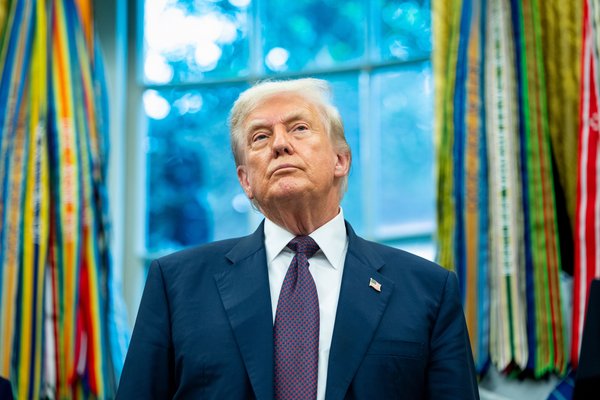
UPDATE: The next phase of Donald Trump’s trade war is now underway as a 15% tariff has officially taken effect for countries facing a trade deficit with the United States. This move marks a significant escalation, with the average tariff skyrocketing to 18%, the highest level seen since 1933.
This urgent development comes as the U.S. aims to address longstanding trade imbalances and protect domestic industries. The impact of these tariffs will be felt immediately across various sectors, raising concerns among consumers and businesses alike about rising costs and potential retaliatory measures from affected countries.
Officials from the U.S. Trade Representative’s office confirm that these tariffs will primarily target imports from nations with significant trade deficits against the U.S. This strategy is part of Trump’s broader economic policy, which emphasizes prioritizing American jobs and manufacturing.
As the global economy grapples with these changes, experts warn that the implications could be far-reaching. Economists predict that the increased cost of imported goods will likely lead to higher prices for consumers, affecting everything from electronics to clothing. This could force consumers to reconsider their purchasing decisions, impacting overall spending in the economy.
The timing of this tariff escalation is critical, as it coincides with ongoing negotiations and tensions in international trade relations. Analysts are closely watching how trading partners will respond, especially given the potential for retaliatory tariffs that could further complicate global trade dynamics.
WHAT TO WATCH NEXT: As these tariffs take hold, businesses and consumers should prepare for immediate shifts in the marketplace. The U.S. administration is expected to monitor the situation closely, and further adjustments to trade policies may be announced in the coming weeks. Stay tuned for updates on how this developing situation will shape the future of international trade and the economy.
This emerging trade landscape not only underscores the urgency of economic policies but also highlights the human impact of such decisions. Workers in industries reliant on imports may face job insecurity, while consumers may confront higher prices and fewer choices in the marketplace.
The unfolding of this trade war is a critical moment that demands attention, as the stakes are high for both the U.S. economy and its global partners. Share this update to keep your network informed about the latest developments in Trump’s trade war and its potential consequences.





